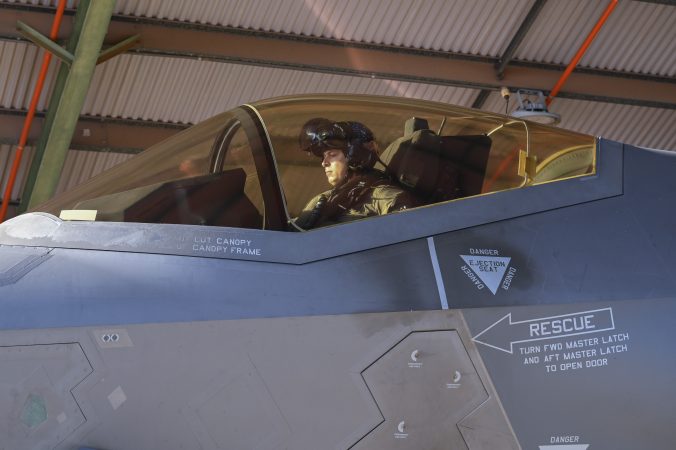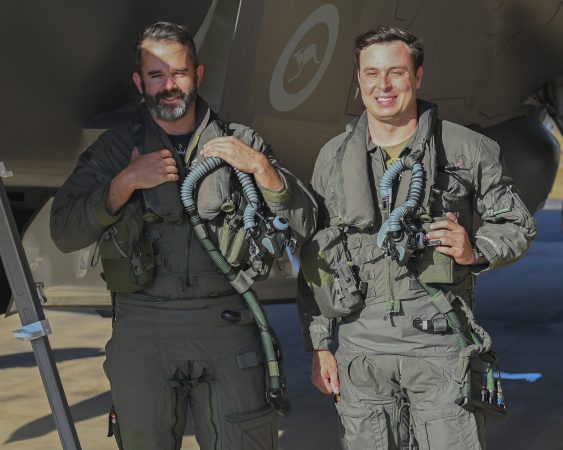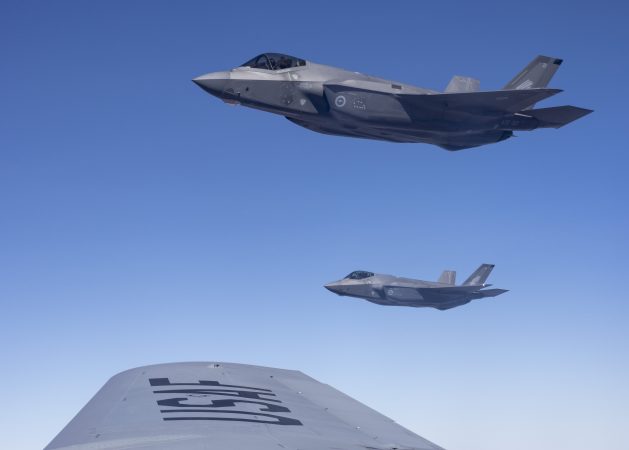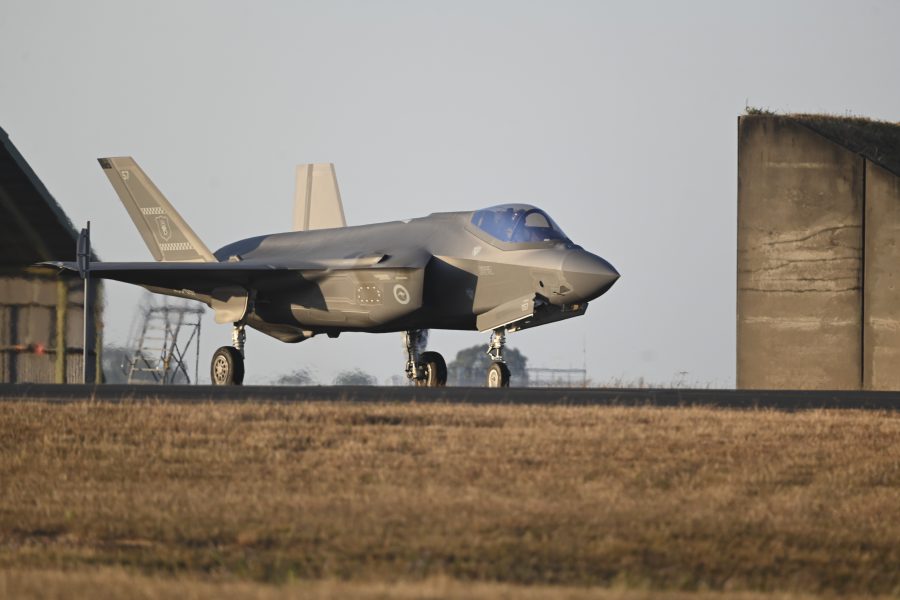The U.S. Air Force put two of its pilots in the cockpit of Royal Australian Air Force F-35A Lightning IIs during the large-scale Talisman Sabre exercise in Australia last week.
The move, intended to strengthen interoperability among allies, gave U.S. Air Force pilots a unique opportunity to fly a fifth-generation aircraft belonging to a partner nation.
The Air Force pilots who participated in what the service calls an “interfly” exercise were Maj. Justin “Spike” Lennon, an evaluator pilot with the 48th Fighter Wing at RAF Lakenheath, U.K., and Maj. Colby “Burn” Kluesner, an evaluator pilot with the 388th Fighter Wing at Hill Air Force Base, Utah.
There have long been exchange officers in the U.S. Air Force, including American pilots embedded with allied F-35 units and partner nations’ service members in American units. But USAF emphasized that the two pilots were approved to fly the RAAF’s F-35 after limited training with the Australian aircraft and operations—just a day of classroom work and simulator training, a release from Pacific Air Forces stated.

“Interfly has allowed the USAF to train partner nations on weapons systems they have purchased, as well as conduct exchange assignments,” Lennon said. “However, until now the USAF has never performed international interfly on an ad-hoc basis.”
Talisman Sabre is a biannual exercise, primarily between the U.S. and Australia. Some 19 nations are participating in this year’s iteration, the most ever, with 30,000 total military personnel, according to allied officials.
The Air Force has been pushing to increase the interoperability of its F-35 fleet with cross-service events conducted among NATO allies. But the F-35 interfly event in Australia aims to normalize F-35 cooperation in the Pacific.
The RAAF has pushed for increased interoperability with allied nations’ F-35s through its Lightning-X initiative.
The program “allows RAAF commanders to treat our coalition counterparts as RAAF aircrew when we consider things like medical, dental, physiological issues, egress systems, and human factors,” according to RAAF Squadron Leader Nicholas Reynolds, No. 77 Squadron executive officer.
The RAAF’s F-35s were not the only fifth-generation firepower on display at Talisman Sabre. Seaborn F-35s from U.S. and U.K. aircraft carriers are participating in the exercise. American fifth-generation F-22 Raptors also deployed from Hawaii as part of the 199th Air Expeditionary Squadron to Australia’s Northern Territory.
“In the long term, as a coalition, normalizing Interfly gives commanders additional options for agility and versatility in a future conflict,” Lennon said in the release. “In a prolonged conflict, airplanes are capable of flying more hours a day than a pilot. Having the added flexibility to put any pilot in any F-35 and generate combat airpower anywhere in the world adds to the F-35 coalition’s lethality.”

Other pilots who participated in the “interfly” were Marine Corps pilot Lt. Col. Johnny “Yardsale” Rose and RAF Squadron Leader Daniel “Goffy” Goff. The aviators are embedded with two of the RAAF’s F-35 squadrons, No. 77 Squadron and No. 75 Squadron.
“The crew are treated no differently than any other RAAF F-35 pilot during Talisman Sabre 25,” Lennon added. “Thanks to the commonality of F-35 variants, aligned training and operational practices between F-35 users, the flying portion is the easiest part.”



